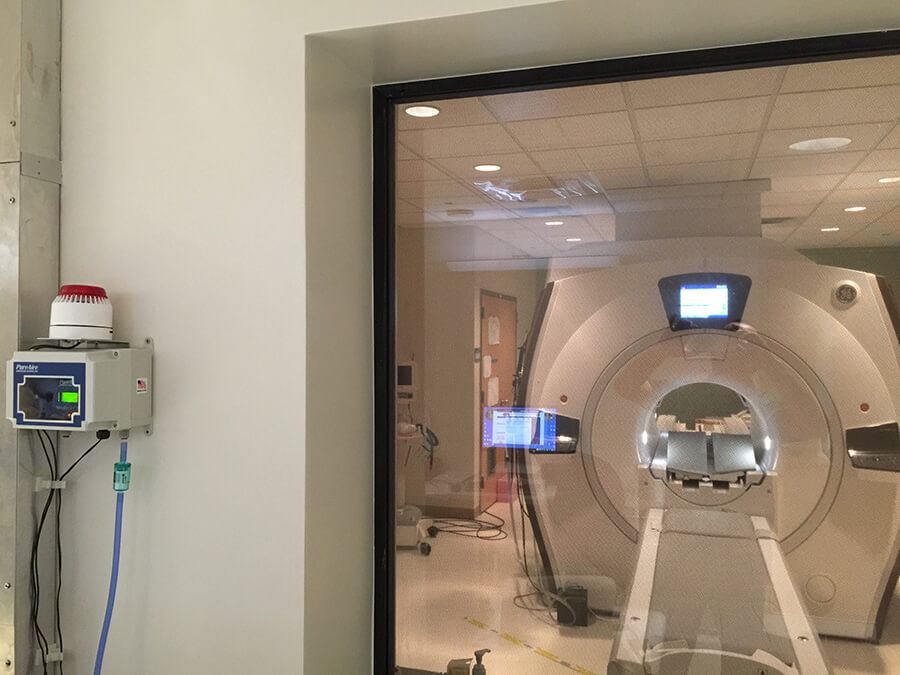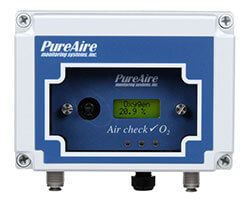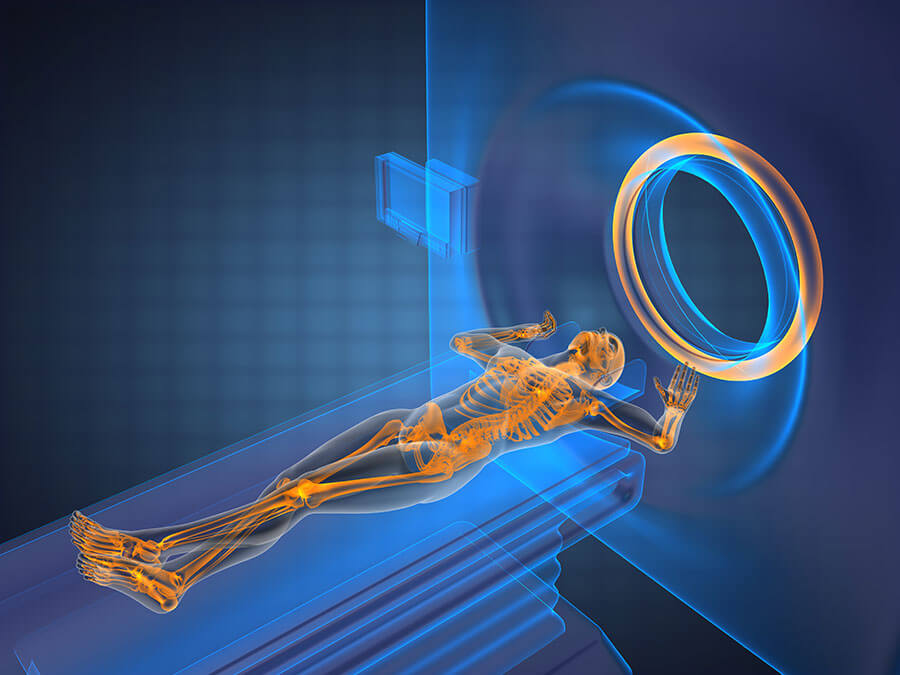Image is Everything: MRI and Helium Safety
- By : PureAire Monitoring Systems
- Posted on : October 28, 2020
- News Room
MRI
Magnetic resonance imaging (MRI) is a diagnostic procedure that uses a combination of a very large magnet, radio waves, and a computer to produce detailed, cross-sectional, and three-dimensional images of organs and structures within the body.
An MRI scan is a valuable diagnostic tool that can show injuries or other anomalies that cannot be seen in a CT scan or X-ray. For instance, soft tissue injuries, such as, strains, sprains, contusions, tendonitis, and bursitis can all be observed via MRI.
Moreover, according to the Mayo Clinic, MRI can also be used to diagnose a variety of brain-related and nervous system disorders, including strokes, aneurysms, multiple sclerosis, eye and inner ear problems, and spinal cord injuries. MRI is widely used in research on brain structures and functions.
How MRI Works
MRI scanning machines vary in size, shape, and degree of openness but the typical MRI machine resembles a tube (encompassing a very large magnet) with a table in the middle, which enables the patient to lie down and slide into the magnetic field created inside the machine. The magnet itself is comprised of multiple coils of connective wire through which a current is passed to generate a magnetic field. To achieve the high field strengths required for most clinical needs, the magnet is cooled with liquid helium to -452 degrees Fahrenheit (-270 Celsius). The super cold temperature applied to the magnet provides for “superconductivity”, meaning that current can pass through the magnet’s coils without electrical resistance, producing the type of strong magnetic field necessary to produce detailed images.
To ensure accurate imaging, and to preserve the integrity of the MRI scanning machine, the liquid helium must be kept extremely cold when the scanner is in operation. If the temperature of the liquid helium were to rise above the very cold levels required for superconductivity, the helium might vaporize and, with the dissipation of the liquid helium’s super-cooling properties, the machine’s magnet could overheat, potentially causing irreparable damage to the MRI machine.
Oxygen Monitors Can Detect Helium Leaks
Helium is an odorless, colorless, oxygen-depleting gas that can rapidly displace oxygen in the air to levels below what is needed for humans to breathe. Excess exposure to helium can cause dizziness, nausea, and loss of consciousness, and could even result in death within seconds of exposure. Because liquid helium is devoid of color and odor, MRI personnel would, absent appropriate oxygen monitoring, likely be unaware that a potentially dangerous helium leak has occurred. As such, the National Institutes of Health’s Design Requirements Manual recommends that, oxygen monitors be installed in MRI treatment areas. For more information on MRI safety — NIH -Protocol for Use and Maintenance of Oxygen Monitoring Devices 2021.
To ensure MRI helium safety, proper oxygen monitoring equipment should be placed in MRI rooms, as well as in storage rooms, and in any other site where helium gas may accumulate. The monitoring equipment should include visual and audible alarms that would be activated in the event of helium leaks and a decrease in oxygen levels.

PureAire Oxygen Deficiency Monitors
 PureAire Monitoring Systems’ Sample Draw Oxygen Deficiency Monitor continuously tracks levels of oxygen and will detect helium leaks before MRI machines are damaged and the health of employees and patients is put at risk.
PureAire Monitoring Systems’ Sample Draw Oxygen Deficiency Monitor continuously tracks levels of oxygen and will detect helium leaks before MRI machines are damaged and the health of employees and patients is put at risk.
The Monitor’s built-in pump samples oxygen from up to 100 feet away, making it ideal for use in MRI facilities. The metal components within the Monitor are outside the imaging area and, therefore, will not interfere with the magnets that are the heart of MRI scanning machines.
PureAire’s durable, non-depleting, zirconium oxide sensor can last 10+ years in a normal environment without needing to be replaced.
In the event of a helium gas leak, and a decrease in oxygen to an unsafe, OSHA action level, the Sample Draw Oxygen Monitor will set off an alarm, complete with horns and flashing lights, alerting staff and patients to evacuate the area. Additionally, the same alarm will alert personnel to turn off the MRI scanner in order to prevent the magnet from overheating which could result in possible damage to the machine.
PureAire’s Sample Draw Oxygen Deficiency Monitor has an easy-to-read screen, which displays current oxygen levels, for at-a-glance observation by MRI employees, who derive peace of mind from the Monitor’s presence and reliability.



